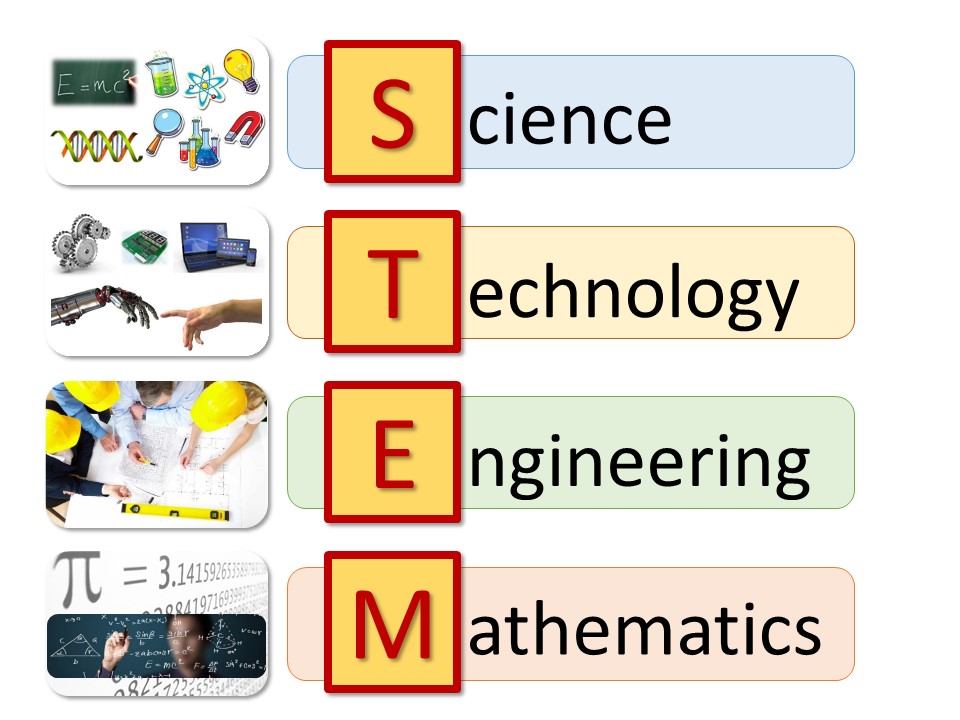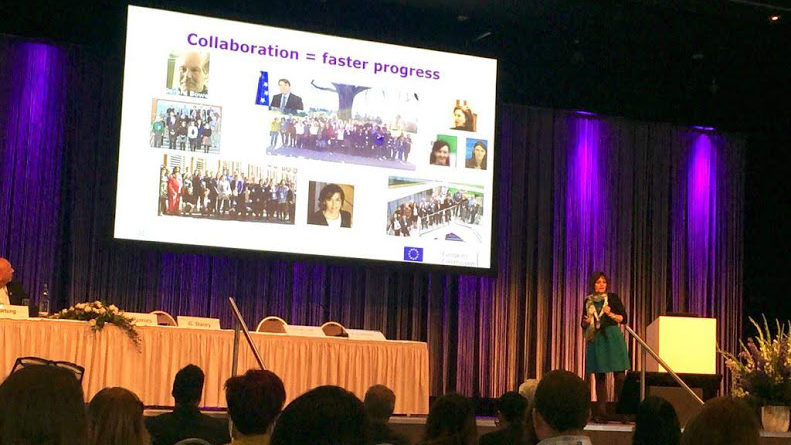STEM – Education for the Future ?
Science, Technology, Engineering and Mathematics (STEM), is a multidisciplinary term used to group together these subjects. Previously known as SMET (Science, Maths, Engineering and Technology), STEM promotes a more “useful” education though applied mathematics and combining subjects to encourage creativity. Similarly to its counterpart HASS (Humanities, Arts and Social Sciences), STEM tries to promote competitiveness by creating organisations around the world which encourage and spread awareness about the benefits of working in their field.

As part of my research I interviewed Sandra Coecke, leading scientist working at the European Commission Joint Research Centre in Ispra, near Varese. She has presented at international scientific conferences and is an open lecturer at the Karolinska Institute (Sweden) and STEM promoter
What is the goal of STEM education? What are the benefits of STEM education?
In order to explain the goal, I will explain first the acronym. The acronym stands for science, technology, engineering and mathematics. […] STEM education tries to bring different disciplines of life science together. A STEM education allows for those who get an education and knowledge in these fields […] a broad multidisciplinary view on things. […] When I was in high school in the 80’s in Belgium […] it was not called STEM education […] but a first attempt at bringing […] life science, mathematics and physics much closer to [the] technology disciplines. Subsequently at university in Brussels, I’ve completed one of the first European degrees in biotechnological engineering; […] we got a lot of the technology and science parts in it, and of course the mathematics with the engineering. My educational has further been complemented with a PhD in the faculty of Medicine and Pharmacy completing my personal STEM education. What currently is been advocated regarding STEM education is to formalise it in a more global European context, and making it more explicit known that STEM education combines four distinct disciplines. Any multidisciplinary approach is greatly welcomed in education. It can be a combination of the life sciences, technology, physics and mathematics, like in STEM education but equally it can be applied to other educational tracks like e.g. the human sciences. […] [A] multidisciplinary view will be so beneficial for further professional careers.”
In what way may STEM give you a perspective that other fields, like HASS, may not?
“Well, I would formulate the question differently. I would not say that HASS education […] does not give the same possibilities [that STEM would], because I think that also [in the case of HASS] there are efforts to embrace the same multidisciplinary of bringing some aspects of sciences in these studies. Any discipline, be it life sciences or social sciences, I would say is beneficial.”
How would the STEM education reform the school system?

“It depends […] although STEM education isn’t really new in principle, bringing [subjects together] in a more harmonised way is a great way to reflect on what is meant by STEM education. In practice it means different subjects, study periods, school facilities. [Schools in Varese] are embracing the more formalised form of STEM. You hear that students have specific subjects on the curriculum, which [no longer] have the conventional naming. […] If you do an education like STEM, […] I’ve [realised] in my career that it so important already from the very early stages of education to exchange views with professionals in the STEM field, like you are doing now with me. That means that STEM education would likely benefit [students] by […] by integrating into the programmes visits, presentations, short-time internships with professionals in the multidisciplinary fields. Having already done this kind of education and exchanging views and opinion on what the advantages are and what STEM education can give you in your professional life can be helpful for those starting a STEM education. Formalising STEM, as it being done now, will help introduce it [into the curriculum] in a more harmonised way in the European school system. But I repeat again, many schools, including the European Schools, have aspects of STEM education already in the curriculum, creatively using [changing] the free [periods] and study trip topics towards STEM directed inputs. […] [This is useful] because you are not only incorporating STEM into the curriculum during the day but also you are stimulating your students to visit sites, to do school and private trips more related to STEM education, to look at STEM facilities, to do some kind of mentoring programme, to allow shadowing on a voluntary basis and much more. STEM is an education like any other, but it is now important to use your creativity to see in your education [path] what could be beneficial for you to open your horizons, creating [networks] already at an early stage. [Finally] this is beneficial for making a more informed decision when applying for higher education.”
Although women are becoming more engaged in STEM education, in the EU there is only 28% of women in the engineering field of study. How can the education system reforms ensure that women have a more equal part of the workforce?
“I know some other women who have done a STEM education, who advocate the benefits of multi-disciplinary education to the younger generations. By, interacting with them, speaking to them, stimulating young women to understand that behind the words, science, technology, engineering and mathematics are exciting professional careers. They can start to understand better the diversity of professionally possibilities that one can do with such an ample multidisplinary education. So based on this type of spontaneous mentoring these women students were better informed about potential future professional choices.

I stepped in the STEM field almost by accident. […} I went to university [for] a biology degree. […] It was only by the fact that during the inscription, a person [told me] that [the university] had just started with a 5 year biotechnology engineering degree, which seemed fascinating. […] It was this face to face interaction which I had, explaining to me very clearly the curriculum, which made me change, in just half an hour, my willingness to study biology for a more STEM style education. Although there is a lot of, or too much information on the internet when you have to make your choices, I think interactions, networking and having a more informed decision by talking to people that have experienced such an education, and [especially] women, […] in this case might enrich other women making a more informed decision when they choose their [higher] education.”
How could countries adapt to accommodate the future STEM workforce?
“There are many benefits to [science & innovation] for a country. […] By harmonising the STEM education […][across] Europe, and sharing for instance the curriculum, exchanging professors between countries that don’t yet have formal STEM education a catalyst effect can initiate. [By following] the example of the STEM formalised countries, countries without STEM education would be kept up to speed. This allows […] local industries to employ [not only] STEM educated people from their country but also from other European countries. [This] would also stimulate their industries to integrate more systematically science and innovation areas. However, I would be very careful [when stating] that these industries are not represented in all countries because there are science and innovation companies in all European countries. The benefit of harmonised STEM driven enforcement […] [is that] there would be a win-win situation in all countries in a more systematic way of STEM enforcement. […] Countries that may not have yet a substantial percentage of STEM industries would be more stimulated to get an explosion of ideas and creativity, because STEM stimulate multidisciplinarity thinking, which impacts future professional developments and application […]. Of course, working together with complimentary ideas and views, not only in the life sciences but also in any disciplines, is beneficial for everyone. […] This would build an ecosystem where our European countries could all work together to grow together.“
Nikola A / S7EN / EEB1 Uccle




